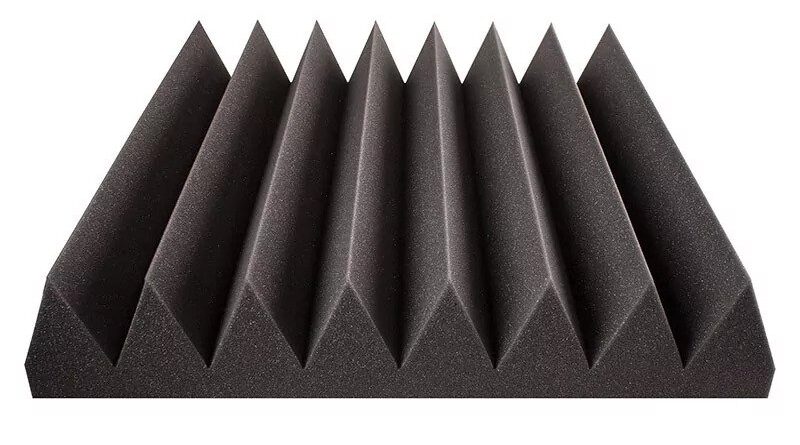The Ultimate Guide to Acoustic Foam Panels
Acoustic foam panels have gained immense popularity in recent years for their remarkable ability to improve sound quality in various settings. Whether you are a musician, a content creator, or just someone looking for a more peaceful environment, understanding how Panneaux de mousse acoustique work and how to use them effectively can make a significant difference in your acoustic experience.
Introduction to Acoustic Foam Panels
Acoustic foam panels are specialized sound-absorbing materials designed to reduce unwanted noise and echo in a room. These panels are composed of open-cell foam, which is effective in dampening sound by converting sound energy into heat. This simple yet ingenious technology has applications in a wide range of settings, from home recording studios to noisy office spaces.
The Science Behind Sound Absorption
To comprehend the benefits of acoustic foam panels, it’s essential to understand the science behind sound absorption. Sound waves travel through the air until they encounter a surface, and when they do, some of the energy is absorbed, while the rest is reflected. Acoustic foam panels increase sound absorption by providing a porous surface that allows sound waves to penetrate, get trapped, and subsequently lose their energy.
Types of Acoustic Foam Panels
There are various types of acoustic foam panels, each designed for specific soundproofing purposes. Common types include:
1. Wedge Foam Panels
Wedge foam panels are the most recognizable type and are often seen in recording studios. Their wedge-shaped design maximizes sound absorption and minimizes sound reflection.
2. Pyramid Foam Panels
Pyramid foam panels feature a pyramid-shaped surface, which enhances sound diffusion. They are excellent for reducing flutter echoes and standing waves.
3. Bass Traps
Bass traps are designed to absorb low-frequency sounds. They are crucial for achieving balanced sound absorption in a room.
4. Diffusion Panels
Diffusion panels scatter sound waves to create a more balanced acoustic environment. They are ideal for larger spaces.
Benefits of Using Acoustic Foam Panels
The advantages of using acoustic foam panels are numerous and include:
1. Improved Sound Quality
Acoustic foam panels reduce echo and background noise, resulting in clearer, more defined sound.
2. Noise Reduction
In residential and commercial settings, these panels can significantly reduce noise from adjacent rooms or outside sources.
3. Enhanced Privacy
In shared spaces, acoustic foam panels can provide a degree of sound privacy.
4. Better Work and Living Environments
In offices and homes, acoustic foam panels create more comfortable and focused atmospheres.
Where to Use Acoustic Foam Panels
Acoustic foam panels are incredibly versatile and can be used in various settings:
1. Home Recording Studios
Home studios benefit from improved audio quality for recording and mixing music and podcasts.
2. Office Spaces
Open-plan offices can become more productive and less noisy with the addition of acoustic panels.
3. Home Theaters
Enhance your movie-watching experience by reducing sound reflections and echoes.
4. Restaurants and Cafés
Acoustic foam panels can create a quieter and more pleasant dining environment.
How to Choose the Right Acoustic Foam Panels
Selecting the right acoustic foam panels depends on factors such as room size, purpose, and aesthetic preferences. It’s essential to consider these aspects to achieve the best results.
Installing Acoustic Foam Panels
Proper installation is crucial to maximize the effectiveness of acoustic foam panels. Whether you’re applying adhesive or using mounting brackets, following the manufacturer’s instructions is essential.
Maintaining Acoustic Foam Panels
To ensure your panels continue to function optimally, regular cleaning and maintenance are necessary. Dust and debris can accumulate on the surface, affecting their performance.
Alternatives to Acoustic Foam Panels
While acoustic foam panels are highly effective, they are not the only solution for soundproofing. Alternatives include soundproof curtains, diffusers, and bass traps.
Acoustic Foam Panels and Home Recording Studios
Home recording studios often rely on acoustic foam panels to achieve professional sound quality. Properly treated rooms produce recordings with minimal background noise and echo.
Acoustic Foam Panels in Commercial Spaces
In offices and commercial settings, acoustic foam panels contribute to better concentration, productivity, and employee well-being. They can also create a more inviting atmosphere for clients and customers.
Acoustic Foam Panels for Noise Reduction
Acoustic foam panels can be instrumental in reducing noise pollution in urban environments, particularly in apartments and condos.
Do-It-Yourself Acoustic Foam Panels
For the budget-conscious and crafty individuals, creating your own acoustic foam panels can be a fun and cost-effective project.
Acoustic Foam Panels Myths Debunked
There are various myths surrounding acoustic foam panels, such as their ability to block all external noise or their impact on aesthetics. We’ll address some of these misconceptions.
Conclusion
Acoustic foam panels are versatile, effective, and essential for anyone seeking to improve their acoustic environment. Whether you’re a music enthusiast, content creator, or office manager, understanding the benefits and proper use of acoustic foam panels can significantly enhance your experience.




